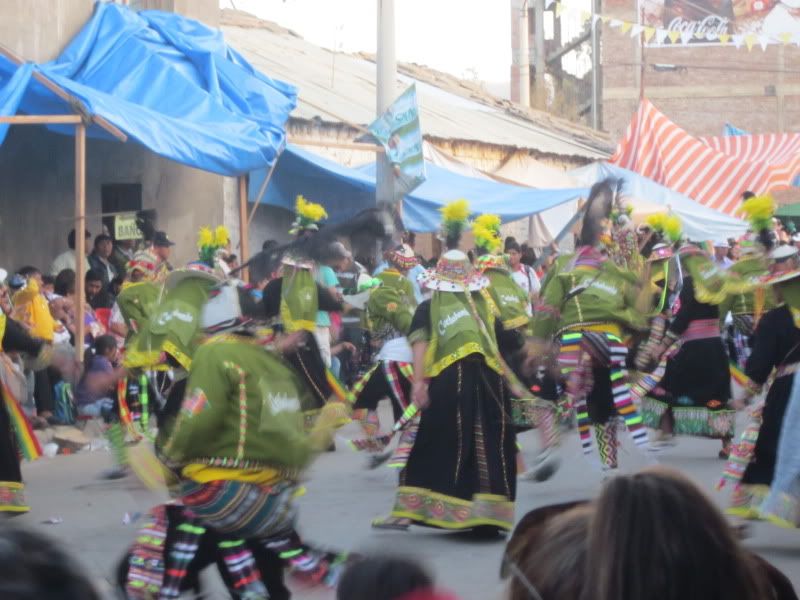The following pictures are from a dance called Tinku. Wikipedia's got a pretty good description of it, so I think I'll quote them:
Tinku, an Andean tradition, began as a form of ritualistic combat. It is native to the northern region of Potosí in Bolivia. In the language of Quechua, the word “tinku” means encounter. In the language of Aymara it means “physical attack.” During this ritual, men and women from different communities will meet and begin the festivities by drinking and dancing. The women will then form circles and begin chanting while the men proceed to fight each other; rarely the women will join in the fighting as well. Large tinkus are held in Potosí during the first few weeks of May.
Because of the rhythmic way the men throw their fists at each other, and because they stand in a crouched stance going in circles around each other, a dance was formed. This dance, the Festive Tinku, simulates the traditional combat, bearing a warlike rhythm. The differences between the Andean tradition and the dance are the costumes, the role of women, and the fact that the dancers do not actually fight each other. The Festive Tinku has become a cultural dance for all of Bolivia, although it originated in Potosí, like the fight itself.





Notice the inclusion of the Wiphala - the Indigenous Andean flag - in their costumes







No comments:
Post a Comment